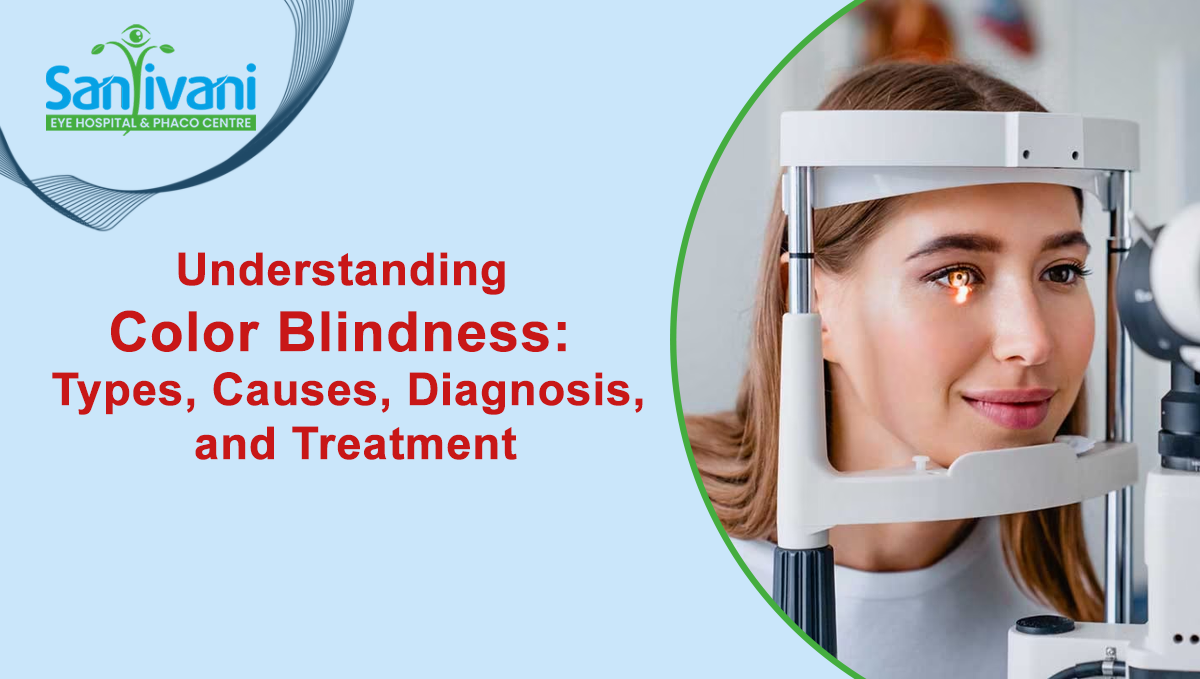
Understanding Color Blindness: Types, Causes, Diagnosis, and Treatment
Introduction
Color blindness, or color vision deficiency, is a condition that affects a person's ability to perceive colors accurately. While not usually a serious condition, it can impact daily life and certain professions. This article aims to explore the types, causes, diagnosis, and treatment options for color blindness.
Types of Color Blindness:
- Red-Green Color Blindness : The most common type, affecting the ability to distinguish between red and green colors.
- Blue-Yellow Color Blindness: Difficulty in differentiating blue from green and yellow from violet.
- Complete Color Blindness (Monochromacy): Rare condition where a person sees only shades of gray.
- Partial Color Blindness (Anomalous Trichromacy): Subcategories where one type of cone cell is abnormal, leading to difficulties in perceiving certain colors.
Causes of Color Blindness:
- Genetics : Inherited through genetic mutations on the X chromosome, making it more common in males.
- Farnsworth-Munsell 100 Hue Test : More detailed test involving arranging color tiles in order of hue, helping to identify specific color deficiencies.
- Genetic Testing : Molecular genetic testing to identify specific genetic mutations associated with color blindness.
Effects and Challenges of Color Blindness:
- Everyday Life : Standard screening test using colored plates with hidden numbers or shapes that are difficult to discern for color-blind individuals.
- Education and Careers : Challenges in certain professions like graphic design, electrical wiring, and transportation.
- Emotional Impact : Feelings of frustration, embarrassment, or isolation, especially in social situations where color is significant.
5.Treatment and Management Options:
- Corrective Lenses : Some color-blind individuals may benefit from specialized lenses or glasses designed to enhance color perception.
- Color Vision Training : Techniques and exercises to help individuals better recognize and differentiate colors through practice.
- Assistive Technology : Smartphone apps, color-detecting devices, and computer software that provide color descriptions or assist in color identification.
- Accommodations in Education and Work : Providing color-blind-friendly materials, using alternative color schemes, and implementing accessible design principles in environments where color perception is crucial.
Coping Strategies and Support
- Educational Resources : Accessing information and resources about color blindness, including online communities and support groups.
- Open Communication : Informing friends, family, and colleagues about color blindness to help them understand and accommodate individual needs.
- Positive Mindset : Focusing on strengths and abilities rather than limitations, and embracing personal uniqueness.
Conclusion
Color blindness is a common condition that can have various impacts on daily life, education, and professional endeavors. Understanding the types, causes, diagnosis, and treatment options for color blindness is essential for individuals affected by this condition, as well as for those interacting with them. By raising awareness, providing support, and implementing accommodations, we can help color-blind individuals navigate their world with greater ease and confidence.